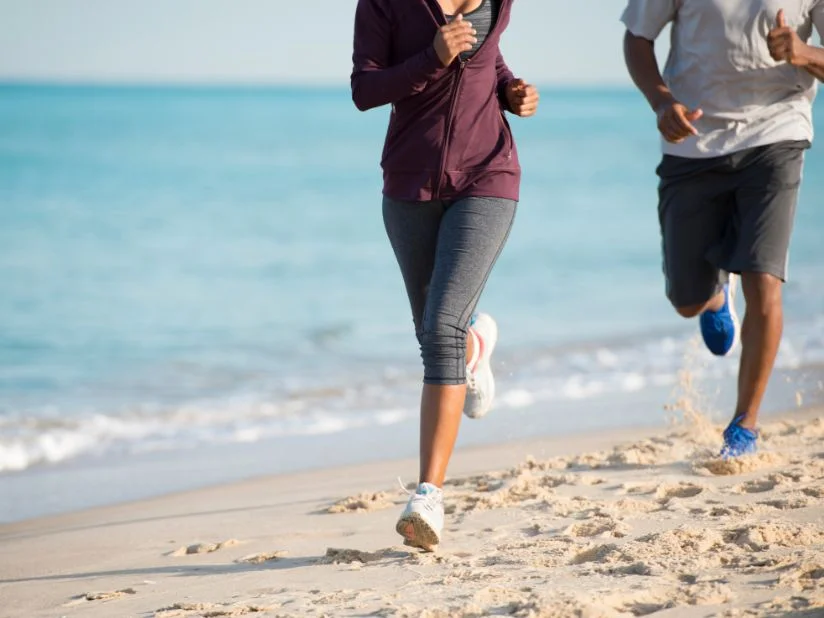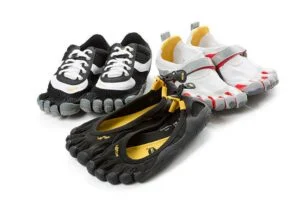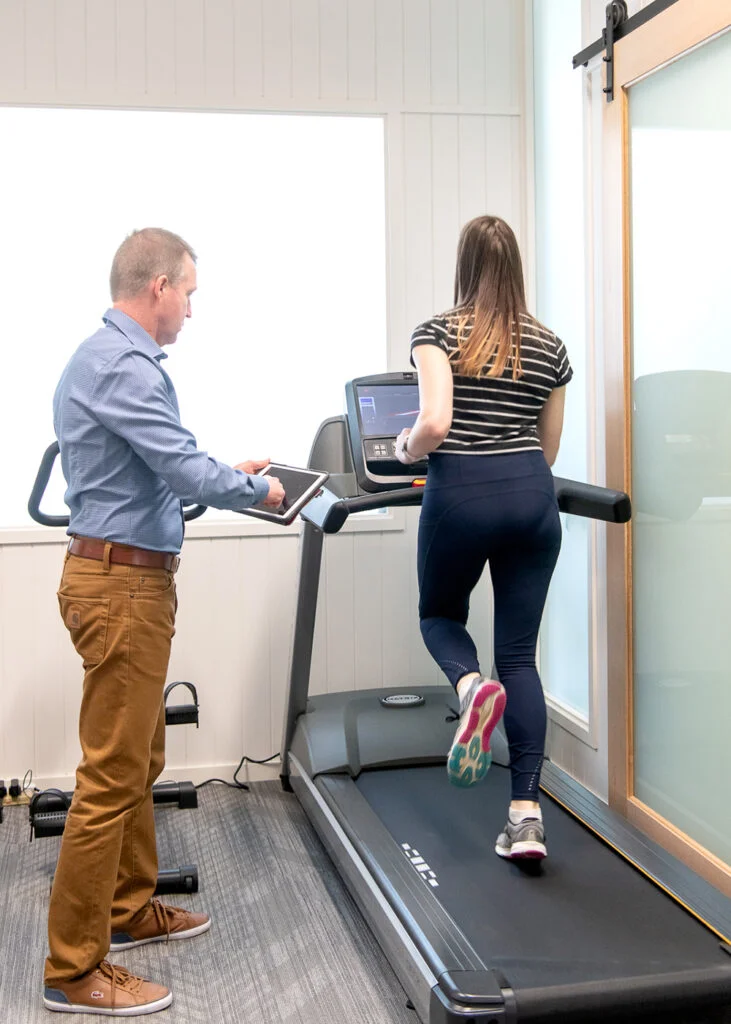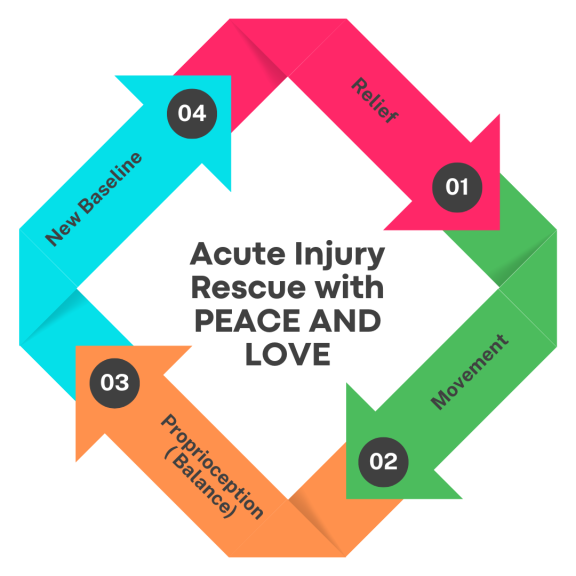Are you someone that has taken a break from running over the last few years? Fair enough! The pandemic has had its challenges over the years and contributed to a large number of people stopping their regular running routine. Well jumping straight back into that same load you were doing 3 years ago, might not be such a good idea. Doing too much, too soon can lead to injuries like tendinopathies, stress fractures, muscle strains and tears to name a few. We recommend you follow this blog post, to give you an idea of how to return to running after taking a break these last few years.

Tip 1: Start Slow
The biggest mistake people make is trying to jump straight back into some form of high intensity running they had completed before. While it might seem like a good idea to go hard early, it’s actually not the case. Overuse injuries like runner’s knee, jumper's knee, shin splints and even in some cases, stress fractures might occur if too much is done too early. The evidence shows that there is some association of injury with increased distance, even in experienced runners (1). Starting again puts you at a novice level runner after a couple of years off, so it would be best to start off light.
The best approach will involve starting somewhere small and building up from there. An hour walk would be a good place to start, so the body can begin to understand what exercise is again. After a few good solid walks, then transitioning into a walk/jog exercise for around 30 minutes with regular breaks is a good step from here. This is a very broad starting point and doesn’t have clear guidelines for progression or regression. Consult with our clinicians if you want clear individual guidelines and a program to follow to minimise injury risk.
Tip 2: Wear High Quality Footwear
The flashiest pair of runners tend to very rarely be the best quality. But if minimising injury is what is most important to you, then finding the most supportive and high quality footwear should be a priority. The impact of footwear on running economy has been studied over the years. Running economy is the relationship between oxygen consumption and running speed. Studies have looked at whether certain factors like footwear can allow us to use less oxygen while maintaining or improving running speed. Some research has shown that factors related to our footwear like shoe stiffness, cushioning and comfort can influence running economy in individuals (2).
The research on what the correct footwear is for each person is very mixed. Some studies recommend the use of minimalist shoes, which are those unique looking shoes with the toes on the end.

There is some evidence to suggest they can impact running economy for the better but have minimal research into their long-term or acute injury risk (2). Some researchers the use of shoes with greater cushioning, which can potentially avoid injuries related to the plantar surface, such as plantar fasciitis (3). However, investigations into footwear with greater cushioning has shown limited effect on impact related injuries (4).
Another form of running is barefoot running. Some people love to run barefoot, especially on surfaces like sand at the beach. But is it safe for our body? A study compared runners running barefoot against runners in shoes. Interestingly, over the course of 12 months, there were no significant differences between the two groups in relation to the number running injuries. What was interesting, is that both groups appeared to suffer different types of injuries. The study showed that barefoot runners are more likely to suffer from foot, achilles and calf related injuries, whereas runners in shoes were common to suffer injuries related to the knee, hip and plantar fascia (5). More information is required to form a strong opinion on the matter, but it’s possible that some people might actually benefit from running barefoot, but of course, the possibility of cuts and infections from running barefoot might not be worth the risk.
So it begs the question, what shoes are going to minimise injury risk while allowing for efficient running? As every shoe that is out there hasn’t been studied on their injury risk and impact on running performance, this can be hard to determine. It’s best to understand what research HAS been done and follow accordingly. Brooks and ASICS shoes are two that have been studied, and different pairs of their footwear have shown to limit and decrease plantar stress (3). My advice would be to start with a brand like ASICS or Brooks and see how your running performance is impacted. But it is difficult to say those shoes will be right for everyone. Some people can run fine in a cheaper and lower quality pair of shoes, but if you are someone who is getting sore feet, legs, hips and back, it might be time to look into those more high quality brands like ASICS or Brooks.
Tip 3: Focus on Recovery
There is much conjecture around what recovery modalities are useful and useless. Should we jump in the ice bath? Hyperbaric chamber? Cryotherapy? Heat? There is mixed evidence behind some of those forms of recovery and some of them can be expensive and not very practical. Here are some ideas that are FREE! And have been studied extensively! At Peak MSK Physio we recommend you focus on:
Sleep
Sleep has been studied on its impact on recovery. Sleep has shown to positively influence reaction time, mood and sprint times. Sleep deprivation has shown to also impede muscle repair and negatively impact the body's ability to recover post exercise (6). The best thing about sleep is in fact that it is a FREE method of recovery, and is going to be the most important aspect. So, make sure to get that 8-9 hours of quality sleep!
Nutrition
High protein foods have been studied extensively on their impact on muscle recovery. 20-40g of protein post workout is a common recommendation people are told about when they are exercising or going to the gym. But the evidence suggests that what is more important, is the consumption of protein throughout the day. Protein consumed immediately after exercise has proven to show no difference compared to protein intake immediately prior to workout. The best evidence has shown that muscle recovery is enhanced in those that consume foods high in protein throughout their day and as a part of their regular diet (7).
Tip 4: Incorporate Strength
Ensuring we have strength to not only enhance our performance, but to ensure our body can cope with repeated bouts of loading will benefit when returning to running. We see many people at Peak MSK Physio who return to running or hiking or even long periods of walking and start to develop soreness and sometimes injuries. Most of the time, it is because their bodies are unable to cope with the load they are under, and they have tried to do too much too early. A good way to minimise these risks is to have a good strength base behind your body so it is able to cope with activity demands.
A study on runners undergoing a strength program for a period of 8 weeks showed improvements in 10km running performance (8). What was interesting was that this study displayed decreased muscle fatigue further into the race, showing it took longer for runner’s muscles to become tired. Of course when our muscles become tired, they can become overworked and sore, and at times lead to injury. Strength training can help minimise this fatigue and help you perform to a higher level.
Tip 5: Utilise an Osteo or Physio You Trust
The most important aspect of your return to running is to make sure you have an osteopath or physiotherapist that can manage you. The reason for this is that osteopaths and physiotherapists are trained to manage those who are interested in returning to various sports, dancing, running or walking after an injury or maybe just some time off. The professions understand the importance of load management, recovery, strength training and wearing quality footwear.
Manual therapy can also be a part of the management program to ensure you are feeling your best physically. At Peak MSK Physio, both our specialist physiotherapist and osteopath can provide manual therapy specific to you and your needs, to give you the best chance of running at your best. Manual therapy from the professionals can include mobilisations, soft tissue techniques, dry needling and manipulations for some.
A tailored strength program to follow can also be created by the clinical team at Peak MSK Physio. Whether you’re wanting a program to help you with running, walking or hiking, we can tailor it specific to you. We can screen you and your overall level of strength and function through a movement assessment. From here, we will be able to pinpoint what areas need work in order to maximise performance and decrease muscle fatigue. But we won’t just give you a program and send you away. We can continue to progress and modify the program over the course of many weeks to ensure your technique is correct and that your strength development does not plateau . As your running load slowly increases, so will your strength program.

Your Running Journey Restarts NOW!
Don’t be afraid of getting back into running. It’s proven to be great for your physical health (9) as well as your mental health (10). You can expect to be sore after your first couple of runs as that is normal. But with the right management and following the right advice, you will give yourself every chance of that soreness becoming less of a concern. Make sure to give the clinic a call, so we can help you along the way of your running journey. We are here to help.
Section: FAQ
Should I Run Every Day?
- Running load will differ between everyone, but it’s best to give yourself a day or two of rest between running bouts. This will give your body time to recover so that your next run has your body feeling better.
Should I Run Even If I Am Sore?
- In the early stages of return, it’s more than likely you are going to feel sore as your body likely hasn’t been exposed to such physical demands for some time. But this should get easier over the next few weeks where the body adapts to the physical demands. In order to be sure you are right to run, it’s best to see one of our clinical team members.
Will I Need a Gym Membership for Strength Training?
- No! We can tailor a program specific to you and your lifestyle situation. We know not everyone has access to a gym, but we understand what exercises we can give you to ensure you develop strength in any setting.













